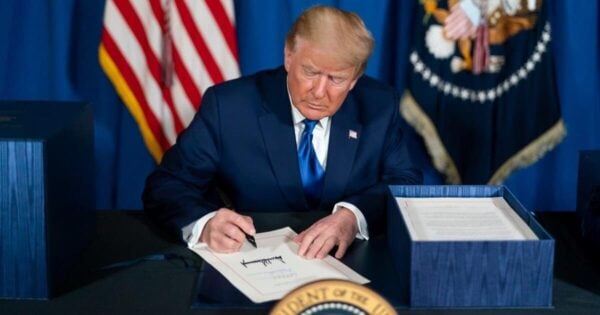Op-ed views and opinions expressed are solely those of the author.
The most recently released economic numbers don’t look good. The rate of inflation which had inched down the last two months, started to inch up. The stock market sees so much uncertainty that stock prices continue their downward trend. And then there are tariffs.
It looks like the short -term impact of tariffs may be painful. If the 25% tariffs stick, your favorite European cars will be more expensive as will all Canadian and perhaps Mexican goods. Nearly all American made cars have components made elsewhere, so their prices will rise too.
A tariff most definitely adds to the cost and increases the price just like a tax. The question is how much of the increase will be passed onto consumers in the form of higher prices and how much the producer must absorb. Essentially that is determined by how badly consumers want the product and how readily a consumer would seek alternatives.
For products that consumers “must have”, the consumer will pay most of the tariff. For products where consumers say “I like the product if the price is right”, the consumers will pay a smaller portion of the tariff. Either way, the price of products imported to the USA will rise.
That’s the short term. In the long term, Americans will see a vast increase in their standard of living, which is the most important outcome of economic policy.
Since January 2021 prices have increased rapidly. Personal income did not grow as fast as the prices rose. That meant each month households were buying less and buying lower quality which led to a decline in their standard of living. For the last 50 months this steady decline in the standard of living wore on the average American.
This must be reversed. And it must be reversed immediately.
To do so, we must bring manufacturing back to the US, especially for vital products like steel, aluminum and medical products. They are currently being produced outside of the US simply because it is less expensive.
Traditionally, the thought was that if Americans could buy something cheaper than they could make it, they should do it.
Now, however we find that philosophy has led to a couple of difficult problems. A large part of our wealth is flowing out of the country as we currently import about $1.2 trillion annually. That would not necessarily be a problem if our exports matched that number. However, exports are less than $400 billion annually. That results in an annual negative balance of trade of more than $800 billion.
There are only two solutions to fix this problem. Either we import less or export more. If the current excessively high tariffs and quotes that our foreign trading partners place on American made products were removed, foreign markets would be open to US manufacturers. Finally, we would see a Chevy in Paris. That would increase US exports.
That’s Trump’s first choice. Open all foreign markets to US producers. That creates new opportunities for US companies internationally. US companies would be able to make up that $800 billion shortfall. If that occurs, all countries will see the benefits of free and fair trade.
If that doesn’t work, then we will have import less. That leads to the second long term gain.
For decades American producers have been lured to produce outside of the US. American consumers demanded lower prices. The problem was that the US lost its manufacturing base. While it may make some sense to produce some goods outside of the US, we must return to “Made in America” products.
The only way to do that is for American made goods to be less expensive than foreign made, which is why the tariffs have been applied. Adding the cost of the tariff will raise foreign made prices above American made prices.
That will lead to massive increases in production of American made goods. That means more opportunities for every American. That eventually leads to higher wages, stable prices and a higher standard of living. Americans will be proud to say “Made in America” is best.
But in the short term it will lead to more inflation.
Trump’s plan to reduce inflation is to have large increases in energy production which will lower energy prices and reduce inflation, since energy directly accounts for about 7% of the CPI and indirectly almost 30%.
While we will have some short-term pain, the long-term gain will be well worth it.
DONATE TO BIZPAC REVIEW
Please help us! If you are fed up with letting radical big tech execs, phony fact-checkers, tyrannical liberals and a lying mainstream media have unprecedented power over your news please consider making a donation to BPR to help us fight them. Now is the time. Truth has never been more critical!
Success! Thank you for donating. Please share BPR content to help combat the lies.
We have no tolerance for comments containing violence, racism, profanity, vulgarity, doxing, or discourteous behavior. If a comment is spam, instead of replying to it please click the ∨ icon below and to the right of that comment. Thank you for partnering with us to maintain fruitful conversation.








![‘We All Owe Him (Elon) a Huge Debt of Gratitude’ [WATCH]](https://www.right2024.com/wp-content/uploads/2025/03/‘We-All-Owe-Him-Elon-a-Huge-Debt-of-Gratitude-350x250.jpg)

![Trump's Admin Guts Another ‘Rogue Government Agency with Zero Accountability’ [WATCH]](https://www.right2024.com/wp-content/uploads/2025/03/Trumps-Admin-Guts-Another-‘Rogue-Government-Agency-with-Zero-Accountability-350x250.jpg)







